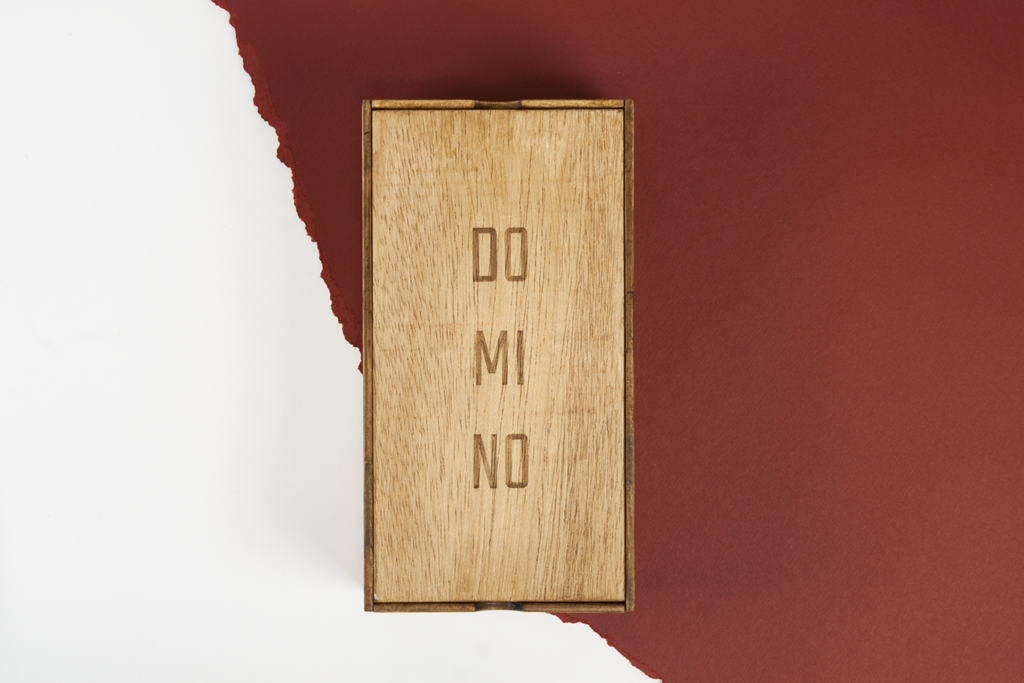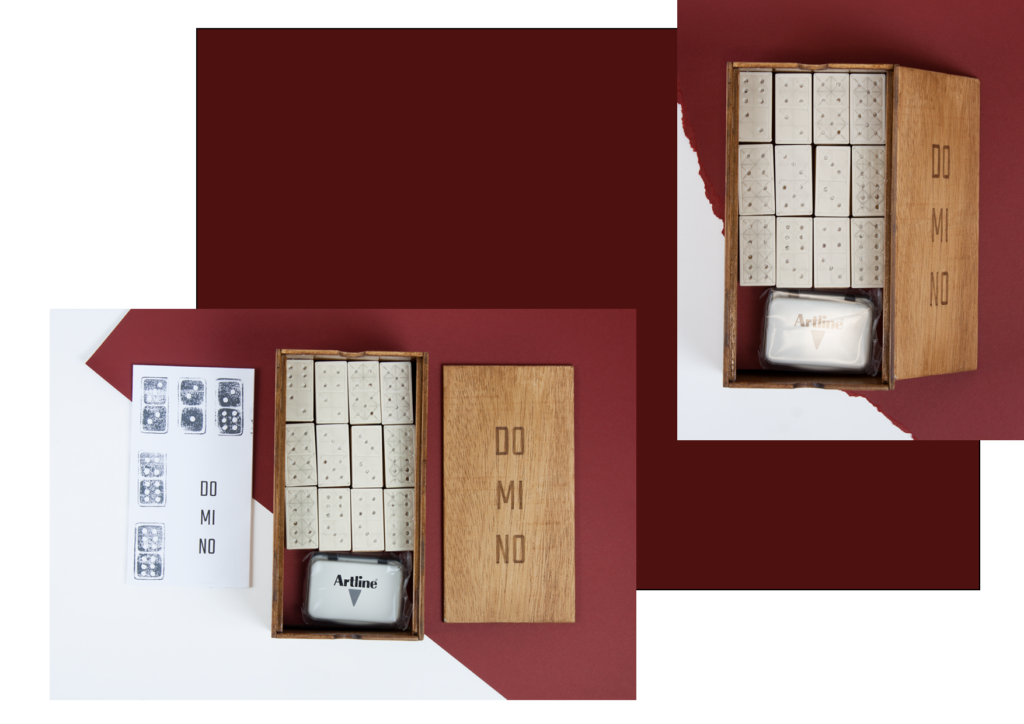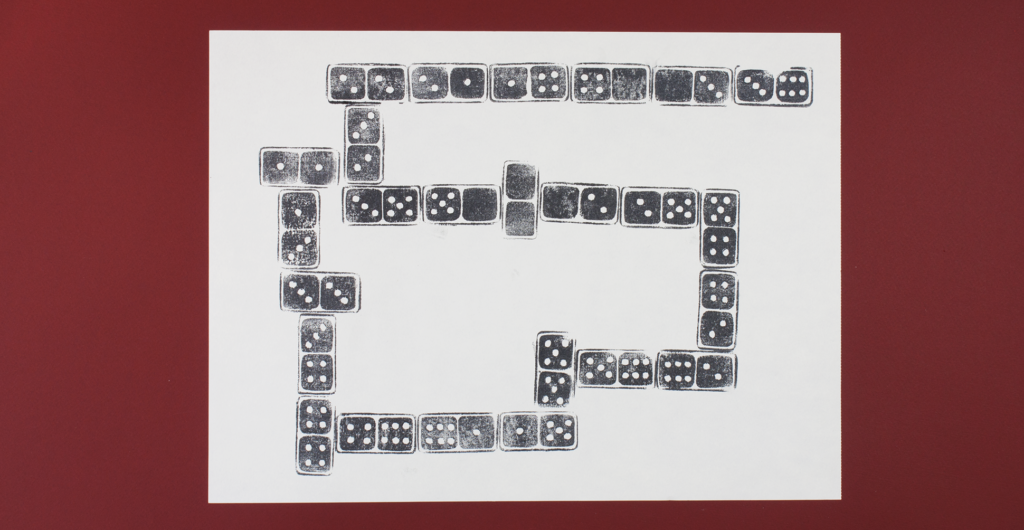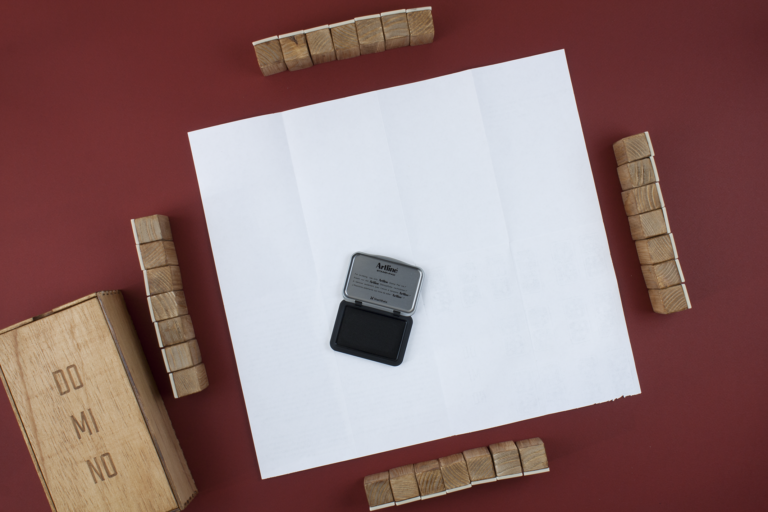
a printart project
from
Elena Bordacconi & Andrea Manfredini
DO MI NO is an art object originated from the mind of the artist Elena Bordacconi and the hands of the artist Andrea Manfredini.
The idea itself came to life as a game and for fun. Born as an intuition and enriched by artistic studies on oriental aesthetics, combined with the personal poetics of the two artists, this game, DO MI NO, has become a multi-purpose creation: An art object that turns into a game and again becomes a piece of art.

Beginning with its oriental origins, both artists wanted to capture the aesthetic essence of the Domino. In fact, the birth of the game dates back to the time of the Chinese Yuan dynasty (from 1279 to 1368) and we can find confirmation of this in the writings of Zhou Mi (1232-1298), who mentions the Domino game in his books “Ancient Acts of Wulin”, the oldest written evidence on the subject.
However, it wasn’t until the 18th century that the game reached Europe, through Italy, and spread to the rest of the world.
Just like Domino, the ancient art of printing, Xylography, also originated in ancient China. This art was born during the Tang Dynasty (618-907), when Buddhist monks began to sculpt reliefs on wooden boards with the intention of printing religious images.


In fact, originally, around the XIII century, the Domino game was used for divinations. Only later, it was given the function of a game.
A series of traditional and aesthetic elements, that constitute this art object, find common origins, that are preserved in the primary function of the game: a unique moment of creation, wrapped in a sacred and ritual action.

The “snake” shape that is built during the action of the game is a unique and unrepeatable moment. To document this uniqueness is the task of art, so that, by recording on paper the trace of every movement of the pawns, through the prints, it is possible to preserve the graphic memory of the unique moment experienced.
GAME MODE

Obtain a sheet of paper, no smaller than 50 centimetres per side.
Distribute 7 tiles for each player, if you play in two. 6 tiles if you play in three or 7 if you play in four players;
The remaining tiles should be left face down, as they serve as a reserve and for the so-called ossuary/graveyard.
The first player prints the first tile on the sheet, after having been soaked in ink in the sponge; then the turn passes to the person who follows on his left. That person can print a tile of his own, attached to the one already printed on the sheet,
only if he/she has one with the score equal to one of the two ends.
If a player cannot print his or her own card, he or she passes the turn directly if four players are playing, or draws from those left face down, until he or she finds one that fits (unused drawn cards must be added to his or her own).
Continue to print the tiles together forming a “snake” shape that should not be closed. The game finishes when: One player prints his/her last tile, all the tiles are printed or the game arrives to a dead end. In the last two cases, whoever has the least number of dots on the tiles wins the round.
THE ARTISTS
Elena Bordacconi, visual artist, works between Germany, Italy and Spain. Born in Rome in 1989, she graduated from the Academy of Fine Arts in Rome in the painting section of Professor Enzo Orti. Later she graduated from the Burg Giebichenstein art school in Halle (Germany) in the Art Book and Bookbinding class of Professor Sabine Golde specialising in handmade paper and natural colours applied to paper, in the same school she began her career as Meisterschülerin.


Andrea Manfredini is a Spanish graphic artist born in Valencia in 1991. He graduated from the Faculty of Fine Arts “San Carlos”, UPV, in Valencia, 2016, developing a project, based on Semiotics and Symbols. Later on, he graduated in 2018 at the Burg Giebichenstein School of Art in Halle (Germany) in the section Art Object and Glass by Professor Christine Triebsch, carrying on a research work on “art printing and metal oxidation”.